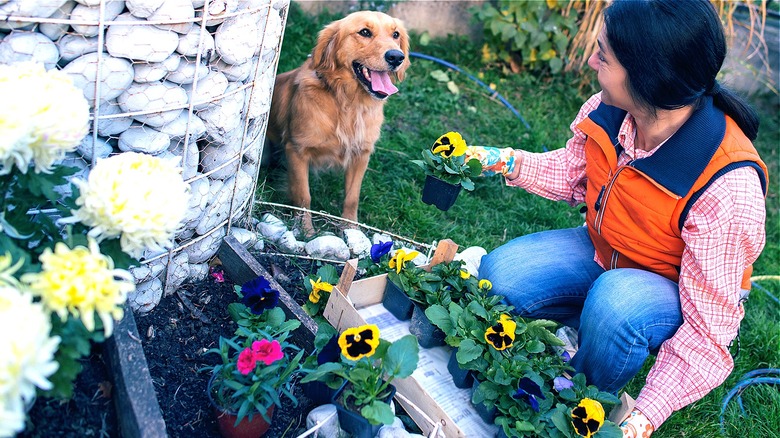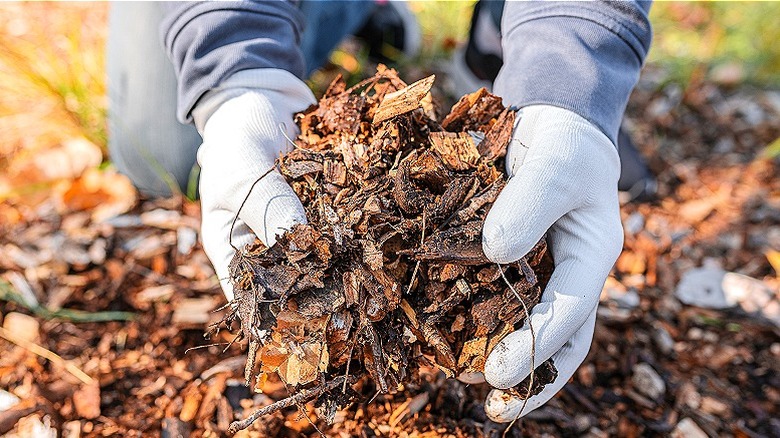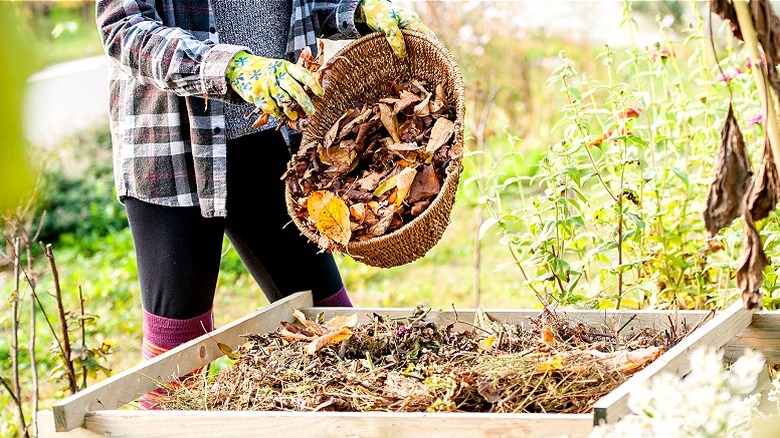The Best Time Of Year To Start Getting Your Flower Beds Ready For Spring
Gardeners look forward to spring for many reasons, including warmer weather, the start of the gardening season, planning on what to plant, and spring bulbs blooming. The garden bed in spring is a welcome sight, with its new growth and promise of beauty and abundance. For maximum garden success, it's a good idea to get your planting areas and flower beds prepared in advance, by doing a bit of extra work in the fall. Autumn is, in fact, the best time to prep your flower beds and get them ready for the following spring.
The quieter, slower season of growth in late autumn leads into the dormant winter season. This seasonal slow-down allows time and space for some important tasks, including cleaning up the summer garden and putting away supplies. You'll also want to add soil amendments and organic material to your flower beds so they'll slowly decompose and enrich the soil. This is also an excellent time to reflect on changes you want to make for next year's garden (and get started on those new plans).
Making time in the fall to plan for next year's gardening season is also a nice way to ease out of the gardening routine we become accustomed to in the warmer months. Even as the days start to get shorter and the temperatures start to drop, you can still enjoy working in your garden to get it in tip-top shape for the spring.
Clean up and soil improvement
Doing your garden cleanup in the fall is an important part of "putting the garden to bed" and also allows you to see what needs to be done to get ready for spring. If tools need replacing, pavers cleaning, or fences some light repair, now is the perfect time to do these tasks. As you deadhead the spent blooms of summer, you can also do some heavier pruning of shrubs, like roses, forsythia, and butterfly bushes.
This is also the time to replenish the soil in your flower beds by adding compost and organic matter. Soil health is one of the most important components of gardening, and you can increase the health of your garden soil significantly by adding nutrients in the fall, which will slowly decompose over the winter, providing important nutrition. You can add shredded leaves and debris from your fall cleanup, too, as long as there's nothing invasive or diseased in the plant material. Dried leaves and pine needles can also be used as mulch around your trees and shrubs, providing winter protection, or you can apply some natural pine mulch chips.
Fall is also a good time to add soil amendments to your flower beds, like aged manure, mushroom compost, or peat moss, as well as "free" amendments like used coffee grounds, wood ash, and eggshells. All of these add nutrients to your soil, providing a good growing environment, and also improving texture and drainage.
Planning ahead for spring
In autumn, you can take some time to reflect on your garden, specifically, what worked and what didn't, and make some new plans for next year's flower beds. Perhaps there are some plants that need dividing or moving to a better spot (note, most perennials can be divided or moved in the spring or the fall), or maybe you'll want to try some new varieties altogether.
You can also spend some time looking around your garden and musing on what plants have done well, which varieties of seeds produced good yields, how the rainy/dry weather treated your shrubs, etc. Maybe you'll decide that an irrigation system is needed for your flower bed, or maybe you think you don't need your current irrigation system and want to go back to watering with your hose and watering can.
Perhaps you'll want to try some drought-tolerant plants next spring and improve your flower bed's soil drainage at the same time. These are the kinds of gardening questions you can mull over starting in the fall, along with taking care of tasks like cleaning up your flower bed, doing repairs, and improving soil conditions. In short, though still months away from spring, fall isn't too early to get started with preparing your flower beds so they are ready to go when the growing season does arrive with the last winter frost.


